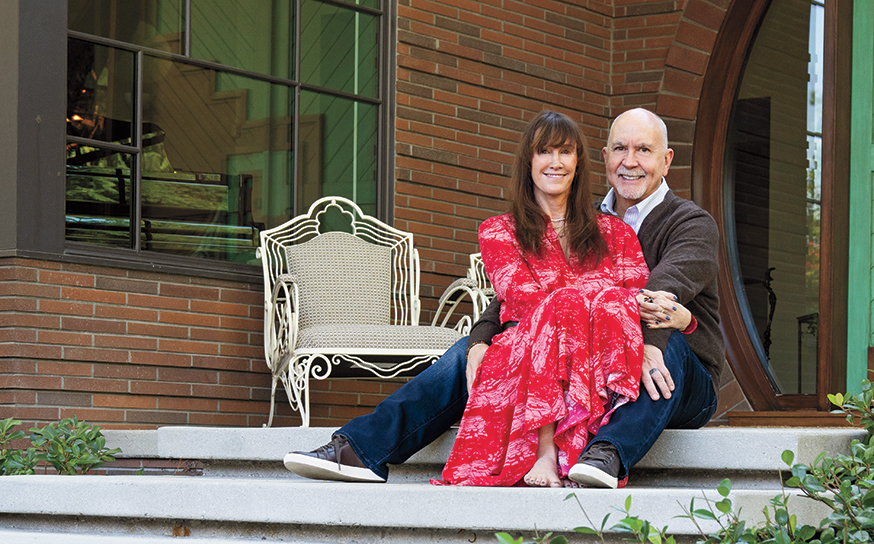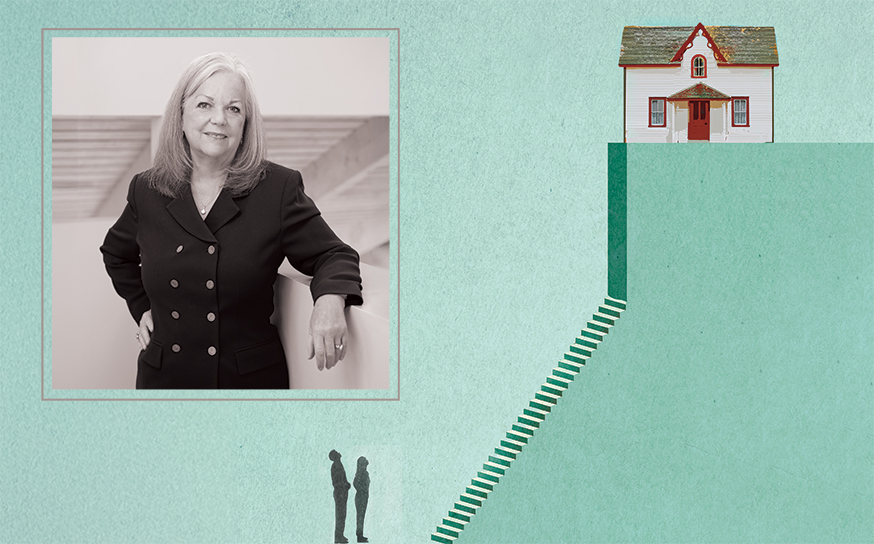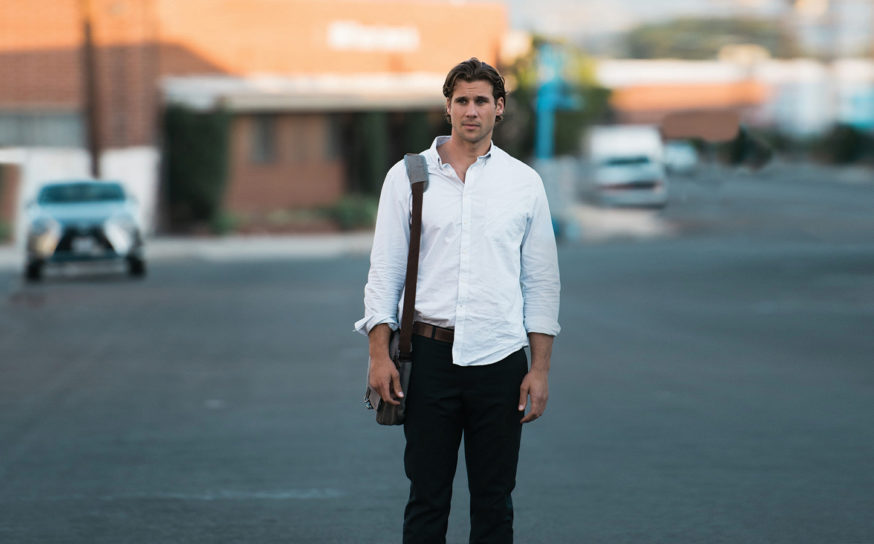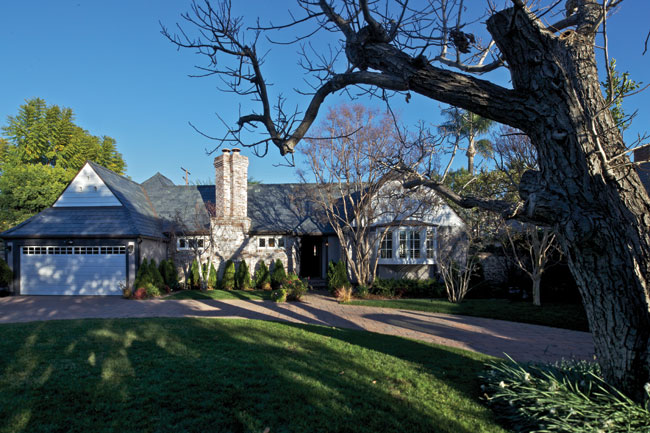
Ready For Its Close-Up
A local builder updates an English
cottage with a Hollywood pedigree.
-
CategoryHomes
-
Written byRachel Heller
When legendary Hollywood developer Charles E. Toberman built a Studio City abode for his daughter, the Valley harbored vast orange and walnut groves, the age of “talkie” films was in full swing and stars clamored for ranch land north of the Santa Monica Mountains—the perfect spot for a “country” getaway.
All of that history wasn’t lost on Steve Jones, who bought Toberman’s well-preserved 1937 structure near the Colfax Meadows neighborhood last year. “I feel like I got so lucky having purchased this home,” Steve says, poring over black and white pictures of the property on his family room table. “I feel like I own a very special part of Hollywood.”
With his sense of awe as a guide, Steve at once embarked on a detailed probe of the dwelling’s lineage and a loving, three-month renovation that preserved its traditional character. At first hesitant even to mount a T.V. on the wall, the residential builder envisioned a way to tastefully update the one-story English cottage without compromising its charm.
The centerpiece of the house is its living room, a warm space framed beneath a lofty, exposed-truss ceiling. The original brick fireplace and leaded-glass windows—complete with their still-intact screens—lend the room a quaint, storybook air. Steve replaced the aging molding throughout the home and put in dark oak floors. Built-in shelving around the mantle offers ample space to display family photos and a few of Steve’s collectible clocks.
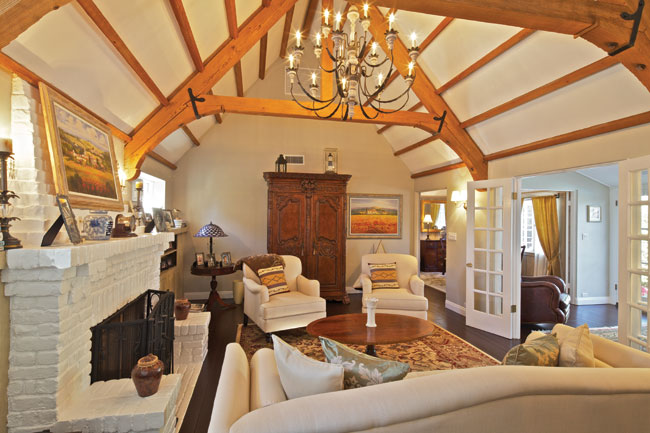 One glimpse of this cozy, gracious alcove was all it took to seal the deal last spring.
One glimpse of this cozy, gracious alcove was all it took to seal the deal last spring.
Steve was seconds away from closing escrow on a 1920s Spanish colonial a few blocks away when the Toberman house was put up for sale.
“When I saw this house, as soon as I walked in, I said, ‘This is the one,’” he recalls. “We had the sale done in two days because I didn’t want to run the risk of losing it. I knew it was a unique property. You don’t find architecture like this in the Valley very often.”
At 2,030 square feet, the home is small but comfortable. The soaring, pitched roof in the living room makes the interior space feel larger than it is. Steve redesigned the bathrooms, freshened the exterior paint and put in new electrical fixtures, always taking care to emulate the home’s established style. “I wanted to maintain as much of the integrity of the house as I possibly could,” he explains.
That meant working within the modest footprint of the galley kitchen—a staple of most pre-war family homes. Steve turned his into a crisp, refined space in which modern gray porcelain tile flooring co-exists pleasingly with an old-world brick arch above the stove. Christopher Peacock design elements—including Carrara marble countertops and white, inset cabinetry with latch closure—create a look that is bright, clean and timeless.
It’s a change Steve hopes “Mr. Hollywood” himself would have approved of. Charles E. (commonly shortened to C.E.) Toberman built dozens of iconic Hollywood landmarks in the 1920s and ‘30s, including Grauman’s Chinese and Egyptian theatres, the Roosevelt Hotel and the Hollywood Masonic Temple. Although he favored Spanish architecture in his famed Outpost Estates, he fashioned a traditional English country home for his daughter, Catherine Toberman Torrence, and her husband, Ernest Ian Torrence, situated amid a walnut grove north of the Los Angeles River.
The house would pass through a succession of owners in the ensuing seven decades. Still, links to the past remain: two walnut trees still stand on the property.
Steve struck up a correspondence with Catherine’s and Ernest’s daughter, who has shared anecdotes and pictures of the home. One photograph shows Catherine, who died in 1980, leaning against the unfinished rear door frame when the house was still under construction. Now, whenever Steve finds a cabinet or closet door left open, it makes him wonder.
“I’ll tell you, I don’t believe in house spirits and stuff like that, but sometimes I think, ‘She must still be floating around,’” he says with a chuckle.





